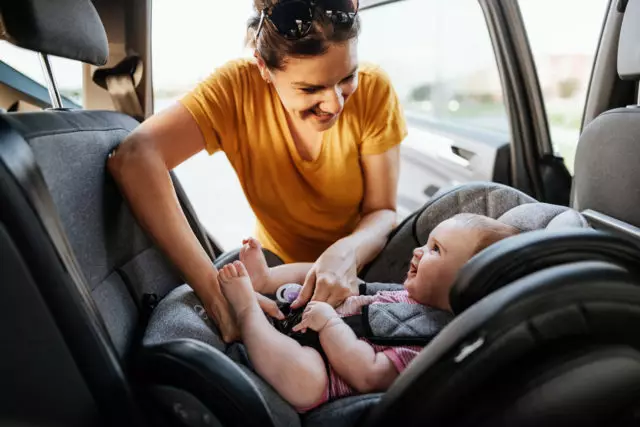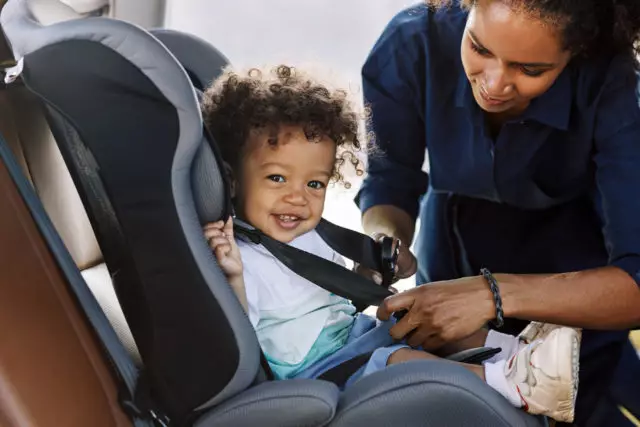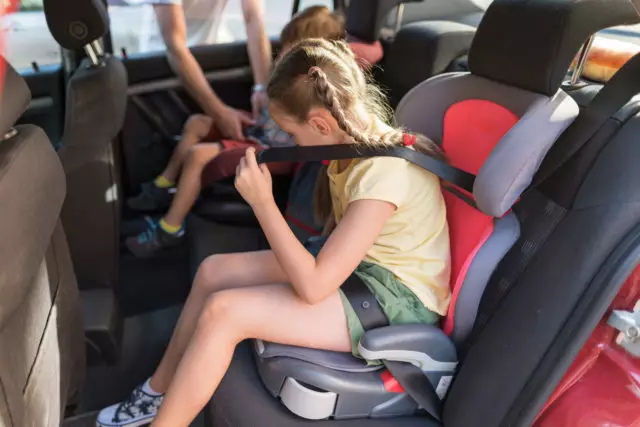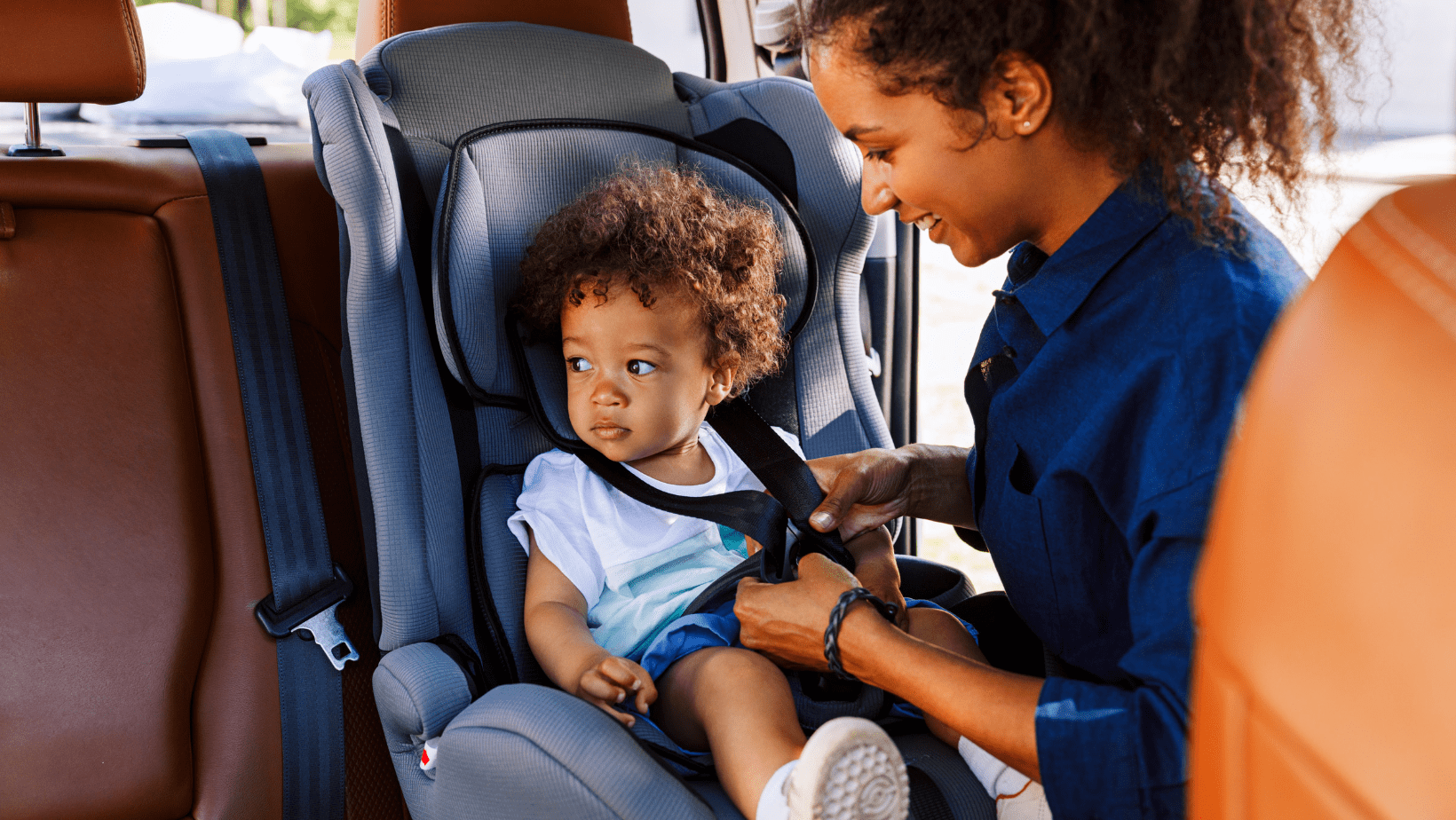When it comes to travelling with your little ones, ensuring their safety is your utmost priority.
And one crucial aspect of that safety is car seat usage. Car seat safety isn't just a recommendation; it's an absolute necessity for protecting yourself and your children while travelling.
A properly installed and correctly used car seat can make a huge difference. In this blog, we'll dive deep into the world of car seat safety and highlight why it's of paramount importance.
From understanding the risks associated with improper usage to discovering the four stages of child car seat use, we've got you covered.
CAA has been helping parents keep their children safe inside and outside the vehicle for decades. We educate parents by providing tips on how to properly use a car seat, and many CAA Clubs across the country have even hosted car seat clinics.
Understanding car seat safety
According to a recent analysis of severe injuries of child passengers, 92% of infants, 74% of toddlers, and 96% of school-aged children were not using the appropriate restraint at the time of the crash.
This is where car seat safety comes in. These specially designed seats provide a secure and protective environment, reducing the risk of injuries in the event of a car accident or sudden stop.
They absorb and distribute the forces that occur during a collision, thereby acting as a crucial barrier between your child and potential harm.
It's estimated that car seats can reduce the risk of fatal injuries for infants by up to 71%, a statistic that speaks volumes about the life-saving potential of their usage.
But car seat safety is not just about placing your child in any seat. It involves understanding the different stages of seat use, ensuring proper installation, and using them correctly.
Some common risks associated with incorrect car seat usage include:
- Inadequate Restraint
Failing to secure your child in a car seat properly can lead to ejection or excessive movement during a collision. This significantly increases the risk of severe injuries.
- Incorrect Installation
Improper installation of car seats can compromise their effectiveness. A seat that is not securely and tightly installed may shift or detach during an impact.
- Inappropriate Size
Using the wrong type of car seat for your child's age, weight, or height can also pose risks. A seat that is too small or too big may not provide adequate protection.
- Loose Harnesses
Having loosely adjusted harnesses can diminish the effectiveness of the car seat. It is crucial to ensure that the harness is snug and properly positioned to secure your child.
You can visit free car seat clinics where a certified technician will check your car seat’s installation and guide you through any changes you need to ensure that it’s secure and the correct fit for your child.
The four stages of child car seat use
As your child grows, their car seat needs will evolve to ensure optimal protection and comfort.
By familiarizing yourself with these stages, you can confidently navigate through each phase of your child's journey, knowing that they are secure and safe.
Stage 1: Rear-Facing Infant Seat
Designed to cocoon your baby in a secure and protective environment, rear-facing infant seats offer numerous benefits that every parent should know.

These provide exceptional support to their delicate bodies. In the event of a collision, a rear-facing seat cradles your baby's head, neck, and spine, minimizing the risk of severe injuries.
This is especially crucial for newborns and infants, whose neck muscles are not fully developed.
As for the recommended age, weight, and height limits for this stage, it's generally advised to keep your child in a rear-facing seat until they’re at least 22 lbs. However, moving them from a rear-facing infant seat to a larger rear-facing seat is advisable until the child outgrows the height and weight restrictions.
It's important to note that different car seat models may have specific weight and height restrictions, so always refer to the manufacturer's guidelines for accurate information.
Proper installation and positioning of the rear-facing seat are paramount for optimal safety. Start by securing the seat tightly in the back seat of your vehicle, preferably in the center position.
This reduces the risk of side-impact injuries. Ensure that the seat is reclined at the correct angle, allowing your baby's head to rest comfortably while maintaining an open airway.
The harness straps should be snug at or just below your child's shoulders, and the chest clip must be positioned at armpit level to keep your little one secure and in the proper position.
Stage 2: Forward-Facing Seat
As your child grows and becomes more curious about the world around them, it's time to make the switch to forward-facing seats that bring a whole new level of adventure and comfort.

These seats are crucial for children who have outgrown their rear-facing seats and weigh at least 22 lbs.
One of the significant benefits of forward-facing seats is that they allow your child to explore their surroundings with a better view. They can now see the world in front of them, engaging with the sights and sounds of the journey. This can help make car rides more enjoyable for both you and your little one.
The recommended age, weight, and height limits for this stage vary, but generally, children make the transition to a forward-facing seat around the age of two.
When installing a forward-facing seat, you'll want to secure it tightly in the back seat of your vehicle.
Make sure the seat is positioned upright, and the harness straps are at or above your child's shoulders. Double-check that the harness is snug and that the chest clip is positioned at armpit level.
As always, refer to the car seat manufacturer's instructions for precise installation guidelines specific to your model. Remember, each seat may have its unique features and requirements.
Stage 3: Booster Seat
Booster seats play a vital role in providing children under the age of 7 years with the necessary support and protection they need while traveling in a vehicle.

They elevate your child to a height where the vehicle's seat belt fits properly across their body. This ensures that the seat belt is positioned correctly, reducing the risk of injuries in the event of a collision.
The recommended age, weight, and height limits for transitioning to a booster seat vary, but typically, these seats are crucial for children who are over 40 lbs and less than 80 lbs.
When it comes to installing and positioning a booster seat, there are a few key considerations.
Begin by placing the booster seat in the back seat of your vehicle. The seat should be positioned in a way that allows the seat belt to fit snugly across your child's lap and shoulder.
Ensure that the lap belt rests low on the hips, touching the upper thighs, and that the shoulder belt crosses the shoulder, chest, and collarbone without cutting into the neck or slipping off the shoulder.
Some booster seats come with a backrest, which provides additional support and helps position the seat belt correctly. If using a backless booster seat, make sure your vehicle's seat has adequate head support.
As with all car seats, proper installation and usage are critical for optimal safety. Follow the manufacturer's instructions carefully to secure the booster seat correctly in your vehicle.
Stage 4: Seat Belt
When children outgrow their booster seats, it's time for them to transition to using seat belts alone — an indication of their growing maturity and readiness for independent travel.

While guidelines can vary, it is generally advised that children should be at least 13 years old and weigh over 80 lbs before transitioning to using seat belts alone.
The key factor in this transition is ensuring that the seat belt fits your child properly. A properly fitting seat belt is crucial to prevent injuries and essential for their safety and protection during travel.
The lap belt should sit low across the hips, touching the upper thighs, and the shoulder belt should cross the shoulder, chest, and collarbone without cutting into the neck or slipping off the shoulder.
As a parent or guardian, it's crucial to lead by example and demonstrate proper seat belt usage. Although teenagers manage their own buckle-up safety, drivers are actually responsible for ensuring that all passengers under the age of 16 are securely strapped in.
Is your child ready to sit in the front seat?
According to Transport Canada, most provinces and territories allow children aged 13 years and older to sit in the front seat. However, there are certain precautions that parents must take:
- Move the front seat as far back as possible, while allowing enough space for a rear passenger, to minimize the potential danger posed by the forceful deployment of front airbags.
- Ensure that your child sits up straight throughout the journey, prioritizing their safety and minimizing distractions. Front passengers should refrain from engaging in activities such as playing with the radio, leaning against the door, or resting their feet on the dashboard.
So, there you have it. As we conclude this blog, always remember that safety is an ongoing journey.
Prioritize your child's safety by staying updated with the latest guidelines and recommendations, and by taking all the necessary steps to protect your precious passengers.
Safe travels.
Learn more about driver's safety at caask.ca/safety. Always remember that CAA is here to help with Road Safety.

